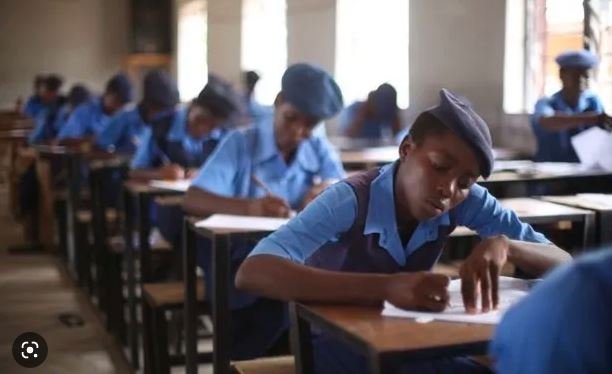Let’s be honest — senior secondary education in Nigeria is barely hanging on. While the spotlight is often on basic or tertiary education, the bridge in between — senior secondary school — is quietly suffering from chronic neglect. The National Senior Secondary Education Commission (NSSEC) is finally sounding the alarm, and it’s about time we all paid attention.
Who is NSSEC?
NSSEC is the regulatory body in charge of policy coordination, quality assurance, and funding advocacy for Nigeria’s senior secondary schools. Established to strengthen the backbone of the nation’s education pipeline, NSSEC plays a pivotal role in shaping Nigeria’s future workforce. Yet, the Commission itself is struggling to operate effectively under limited resources.
The Funding Crisis: A Snapshot
Here’s the raw truth: while billions are budgeted for education annually, only a meager slice goes to senior secondary schools. When compared to funds allocated to universal basic education and universities, senior schools are scraping the bottom.
Imagine trying to run a three-year pre-college program with crumbling buildings, unpaid teachers, and no lab equipment — that’s the current reality in many Nigerian states.
Current Challenges Facing Senior Secondary Schools
-
Infrastructure Woes: Leaking roofs, no electricity, dilapidated science labs.
-
Teacher Shortage: Most qualified teachers are leaving due to poor pay or lack of professional development.
-
Obsolete Materials: Many schools still use textbooks printed over two decades ago.
Statements from NSSEC Leadership
Dr. Iyela Ajayi, the Executive Secretary of NSSEC, didn’t mince words during a recent press briefing. “Senior secondary schools are the forgotten tier in our education system,” he said. “If we don’t act now, we’ll have a generation of half-prepared youths entering the workforce.”
NSSEC is urging all tiers of government to prioritize funding to revamp infrastructure, recruit and retain qualified teachers, and update the curriculum.
Why Senior Secondary Education is Critical
Think of senior secondary education as the final pit stop before adulthood or higher learning. It’s where students prepare for WAEC, NECO, and university entrance exams. But it’s also where they’re supposed to learn real-world skills and develop socially and emotionally. If this stage fails, the ripple effects are massive.
The Impact of Poor Funding on Learning Outcomes
Pass rates in key subjects like Math and English are plummeting. Some students have never used a functioning science lab. Unsurprisingly, dropout rates are rising, and the youth unemployment rate is climbing.
Case Studies and Real-Life Examples
-
Government Secondary School, Minna: Students here share broken desks and learn under leaky roofs.
-
Teacher in Cross River: “I teach Biology without a single specimen or visual aid.”
-
Student from Nasarawa: “We only get two hours of electricity a day — how can we study?”
Potential Reforms and Recommendations by NSSEC
-
Dedicated Funding Streams via education bonds or state-backed levies.
-
Transparency Mechanisms for fund tracking using digital dashboards.
-
Performance-Based Grants for schools that meet accountability metrics.
How Federal and State Governments Can Step Up
-
Increase funding from the current 1.5% to at least 4% of national education expenditure.
-
Establish a joint fund accessible only to vetted schools that meet minimum standards.
Role of the Private Sector and NGOs
Many private firms run on the skills of graduates who passed through these public schools. Isn’t it time they gave back?
-
MTN Foundation is already piloting ICT labs.
-
TY Danjuma Foundation is funding teacher training.
Let’s scale this.
Public-Private Partnerships (PPP) Models
PPP can unlock massive value:
-
Lease-to-own classroom equipment
-
Solar electrification projects
-
Broadband for digital classrooms
Community Engagement and Accountability
Communities aren’t just spectators — they’re stakeholders. PTAs and local groups can:
-
Monitor infrastructure projects
-
Demand transparency
-
Volunteer in administrative roles
The Future of Senior Secondary Education if Nothing Changes
-
Rise in school dropouts
-
Youth restiveness
-
Unskilled labor force
The social and economic toll will be too heavy to bear.
Opportunities for Revitalization
Programs like the National Smart School Initiative and integration of EdTech can revive the sector — but they need money and the political will to succeed.
Media Involvement and Awareness Campaigns
NSSEC is calling on the press to shine a light on these issues. Channels TV, Vanguard, and The Guardian are already running advocacy stories — but more is needed.
Conclusion
Nigeria’s senior secondary education is standing at a crossroads. The alarm has been sounded. Will the government, private sector, and communities rise to the occasion? Or will we continue to ignore the backbone of our educational system?
FAQs
1. What is NSSEC’s role in education? NSSEC oversees policy, quality, and funding for Nigeria’s senior secondary schools.
2. Why is funding so low for senior secondary schools? Most funds are prioritized for primary and tertiary education, leaving the senior level under-resourced.
3. How can private companies help? Through partnerships, donations, infrastructure development, and technical support.
4. Is there any improvement plan underway? Yes, NSSEC has proposed reforms and is working with stakeholders to create a sustainable funding structure.
5. Where can I learn more or get involved? Visit nssec.gov.ng or reach out to your state Ministry of Education for updates and involvement opportunities.


